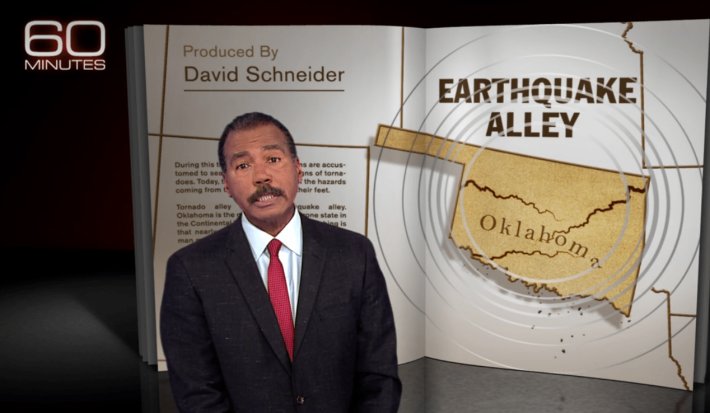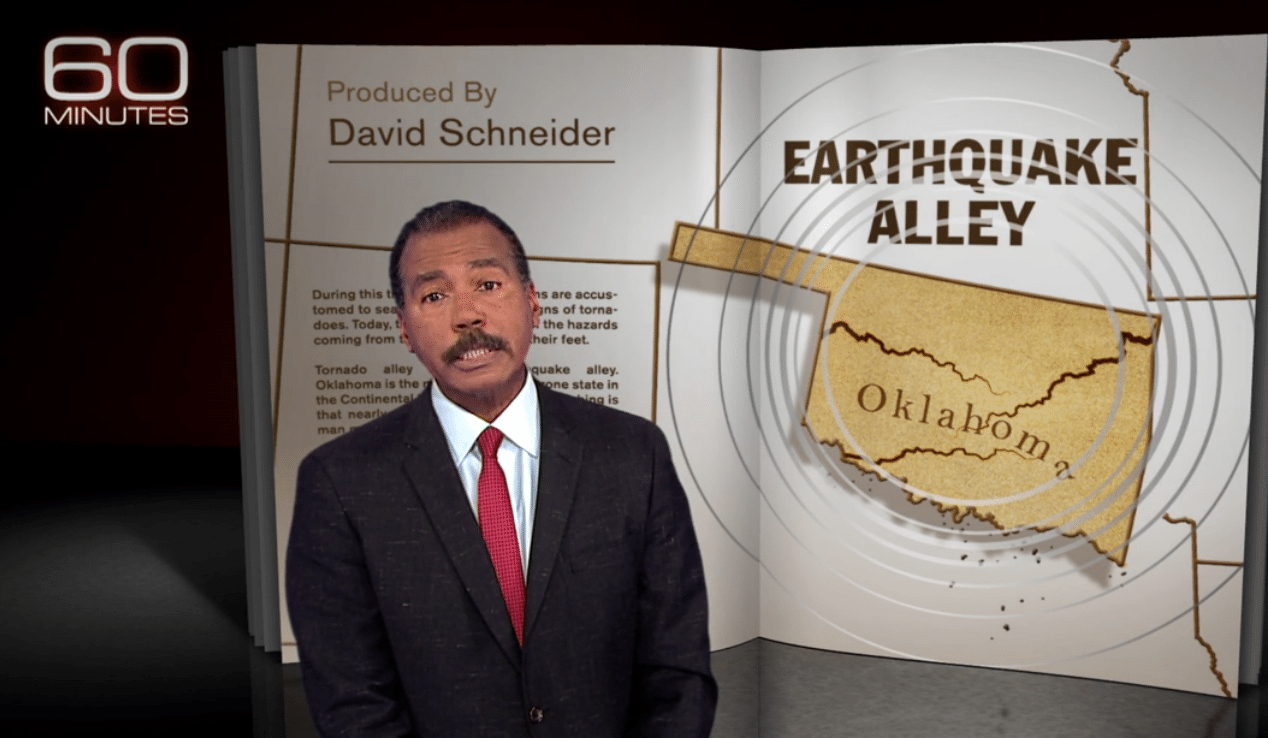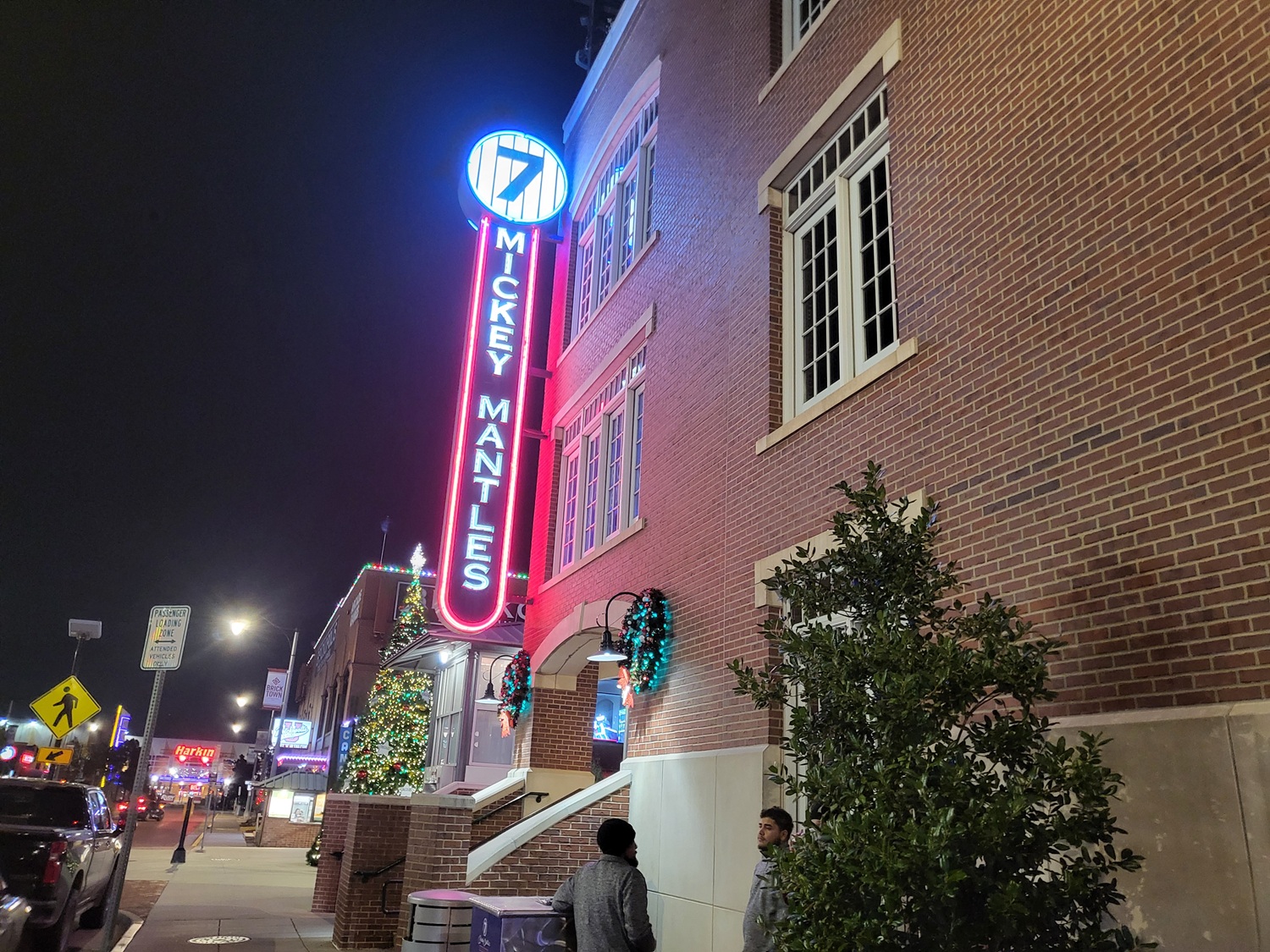Back in January, we mentioned that 60 Minutes was in town interviewing people for a report on the man-made Oklahoma earthquake crisis. After a three and half month wait, the episode finally aired last night. Fittingly, nobody in the state's largest television market got to see it:
Yep, last night's entire episode of 60 Minutes was preempted by a blast of Severe Weather Porn hosted by David Payne. Who cares that all the storms were in Lawton or far western Oklahoma and didn't really pose a threat to 95% of News 9 viewers, I appreciate this just for the irony. You have to admit that it's funny that an important report about a potentially catastrophic natural disaster that could make Oklahoma City crumble to the ground was superseded by live media over-coverage of a different type of natural disaster taking place over 100 miles away. Once again, they should really consider putting "The Natural Disaster" state on Oklahoma license plates.
I'm friends with couple of conspiracy theorists who think this was some sort of cover up by News 9. I don't buy it. Although the Griffin family (a.k.a. the owners of News 9) does have a cozy relationship with the local energy industry, and have used their media conglomerate to help spread misinformation and doubt about the true cause of Oklahoma earthquakes, I don't think they maliciously censored 60 Minutes to prevent the report from being seen. First of all, they'll preempt anything outside of an OU Football game for some severe weather porn. Second, the 60 Minutes story, especially when compared to other reports about how our state has mishandled the earthquake crisis, was kind of weak.
Check it out after the jump:
I'm not trying to be too critical here – I think any national media coverage of our state's man-made earthquake crisis is a good thing – but that lacked the punch of most 60 Minutes investigative reports. I know this because I'm old and DVR every episode of 60 Minutes. I even set it to record an extra hour for those days the NFL or PGA runs late.What can I say? I enjoy watching pharmaceutical commercials geared towards senior citizens. They make me feel healthy and young.
Anyway, the report may have been interesting if you live in Oregon or Virginia and had no clue man-made earthquakes even existed, but it didn't really shed any new light on the situation. It also all but ignored the important fact that Oklahoma Governor Mary Fallin, the Corporation Commission, and even the Oklahoma Geological Survey went to great lengths to mislead the public about the cause of the earthquakes in an effort to shield the energy industry from blame or liability.
For a story that covers that stuff, check out this report that Joe Wertz and State Impact NPR team released on Friday morning like it was a weekend news dump:
Federal Scientists Worried Oklahomans Were Getting Wrong Message on Earthquakes, Records Show
Federal researchers feared Oklahomans were getting inaccurate information and inadequate warnings from state government scientists and officials tasked with studying and responding to a surge of earthquakes linked to oil and gas activity, a StateImpact investigation has found...
The earthquake on Dec. 7, 2013, happened on a Saturday, shortly after noon, during one of the biggest Oklahoma sport events of the year: The University of Oklahoma vs. Oklahoma State University “Bedlam” college football game, hosted that year at Boone Pickens Stadium in Stillwater.
The 4.5-magnitude earthquake, which rumbled at the very moment a Cowboys kicker scored a 41-yard field goal, caused very little damage, but it rattled a lot of nerves. More than 2,800 earthquakes were recorded that year — an all-time high. The state set new records in 2014 and again in 2015.
Oklahoma Geological Survey responded by issuing a statement that pointed to natural causes, minimized the severity of the seismic surge and downplayed what a growing number of scientists had been saying for months: Wastewater disposal wells operated by the oil industry were probably causing many of the earthquakes.
When geophysicist Robert Williams saw that statement, he typed a worried email to his colleagues at the U.S. Geological Survey. “Alarm bells are ringing,” Williams wrote. The statement from the state seismological agency reminded him of the 2009 earthquake that killed more than 300 people in L’Aquila, Italy...
Yep, our state's earthquakes remind scientists of ones that have killed over 300 people. That's good to know. Anything else?
As earthquake activity spiked, U.S. Geological Survey scientists feared Oklahomans were getting inaccurate information from state officials and the oil and gas industry, according to internal USGS emails obtained through the Freedom of Information Act.
A chorus of USGS researchers found statements issued by the Oklahoma Geological Survey from 2012 to 2015 to contain incorrect and misleading information and guidance. For years, the Oklahoma agency emphasized the possibility that natural forces were responsible for the earthquake uptick.
“They just had a different perspective,” Williams said about OGS leadership at the time. “They were more likely to think the earthquakes were not caused by disposal of fluids in wells.”
Federal scientists thought this was misguided. They wanted the state to issue more serious warnings about the possibility for more severe shaking, a point of contention as the two agencies drafted a joint statement released in May 2014.
Taking into account the 5.7-magnitude earthquake that injured two people and damaged scores of homes near the town of Prague in 2011 — which research suggests was triggered by wastewater disposal wells — Williams and other USGS researchers wanted to warn the public about the potential for an even larger temblor.
The OGS resisted, the emails show. The state agency suggested language reminding the public that tornadoes were a bigger hazard than earthquakes. Both were left out of the final statement.
OGS wanted to warn the public that tornadoes were more deadly than earthquakes? I don't want to discount the dangers of a tornado. We all know how powerful, deadly and common they than can be in this state, but please compare Wikipedia's list of deadliest tornadoes to deadliest earthquakes. I know it's an apples and oranges comparison, but I'd take a Mike Morgan tornado genesis hitting the metro over a massive earthquake rumbling underground Edmond anyday.
Senior Science Advisor Bill Leith and others at the USGS also criticized the state agency for embracing fringe theories, like suggesting one flurry of quakes was caused by rainwater filling Lake Arcadia, a small lake near the city of Edmond.
“I felt immediately that that was very unlikely,” Leith said in an interview. “We weren’t on the same page about some of these potential alternative explanations, or that these were natural earthquakes, early on.”
Federal researchers also admonished state officials for exaggerating an apparent earthquake slowdown in January 2015. In emails to colleagues, Williams of the USGS questioned whether “Oklahomans are getting the correct story” from Secretary of Energy and Environment Michael Teague, whom Gov. Mary Fallin picked to lead a state council charged with coordinating the state’s earthquake response.
Ha. It's always good to see respected scintists calling B.S. to that Lake Arcadia theory News 9 tossed out for the energy industry. We were questioning that pile of B.S. before it was cool.
Anyway, I don't want to copy and paste all of Joe's work, so check his entire report by clicking here. It's good, honest work. If that scares you, check out this article sponsored by the energy industry instead. It brags about Oklahoma only experiencing 82 earthquakes in April, and all the progress the industry has made in addressing the problem. It's corporate sponsored propaganda at its finest. Someone send it to the Griffin's. They'll love it.
--








